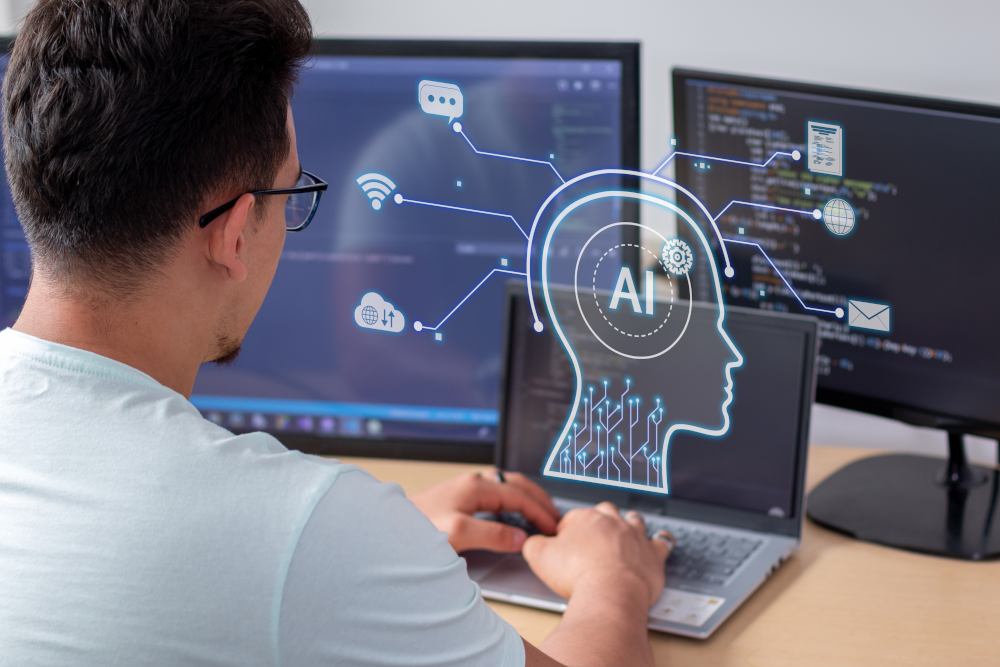The transformative power of AI in HR is reshaping the landscape, turning administrative burdens into opportunities for strategic engagement. Imagine streamlining the employee onboarding process with AI-driven automation, ensuring every new hire experiences a consistent introduction to your organization. This level of precision not only enhances operational efficiency but also sets the stage for a more engaged, productive workforce from day one. Beyond onboarding, AI extends its benefits across the HR spectrum, from refining recruitment strategies with advanced data analysis to enriching employee experiences with personalized, proactive engagement tools. Embrace the shift towards a more innovative, efficient HR environment where technology empowers leaders to focus on what truly matters: cultivating a thriving workplace culture.

Automating Onboarding: The AI Advantage
The integration of AI in HR technology is pivotal, as it revolutionizes how routine tasks are managed, thereby freeing HR professionals to focus on strategic initiatives. One particularly impactful strategy is the automation of the employee onboarding process. Traditionally, manual onboarding is fraught with time-intensive tasks and the potential for human error, often leading to inconsistent experiences for new hires. This inconsistency is problematic, given that only 12% of employees believe their organization’s onboarding experience is effective. Automated onboarding, empowered by AI, ensures swift and accurate processes that are consistent, enhancing the experience for new hires while freeing HR professionals to concentrate on other activities. Furthermore, AI’s role extends beyond onboarding; it’s pivotal in revolutionizing recruitment. AI-driven tools can optimize candidate sourcing and refine resume screening, ensuring a more efficient and effective talent acquisition process.

Leveraging Technology to Elevate Employee Experience
Post-hire, technology continues to play a crucial role. HR professionals can implement self-service portals, allowing employees to access information seamlessly, thereby streamlining both their experience and HR operations. Predictive analytics stands out by providing deep insights into engagement levels, performance, and potential turnover risks, enabling proactive interventions to enhance employee satisfaction and retention. Additionally, AI-facilitated feedback surveys offer a rich resource for actionable insights, helping to continuously improve the employee experience.
The transformative potential of AI in HR is evident in its ability to automate and personalize the onboarding experience, thus enhancing employee engagement and expediting the transition from new hires to fully productive team members. Organizations that adopt these AI-enhanced approaches can expect not only to optimize their HR functions but also to significantly contribute to their overall strategic goals.

Strategic Tech Investment: Aligning HR with Organizational Goals
Navigating the vast landscape of HR technology can be daunting due to the many options available. Therefore, it’s crucial for HR leaders to perform a thorough needs assessment to align technology investments with organizational objectives. This proactive step ensures that the adopted technology is purposeful and tailored to meet specific goals, streamlining the decision-making process and ensuring that investments are justified.
Moreover, it’s essential to consider the compatibility of new technologies with existing systems. Selecting solutions that seamlessly integrate can prevent the challenges associated with isolated systems, such as data silos and inefficiencies. A cohesive HR system where all components—from payroll to talent management—work together to enhance decision-making capabilities and support a comprehensive view of HR functions.

Maximizing ROI: Training, Evaluating, and Optimizing HR Technology
Once the appropriate technology is selected, implementing robust training programs is critical to ensure all team members can effectively utilize the new tools. Continuous evaluation of these technologies is equally important to confirm a positive return on investment (ROI). This ongoing assessment helps in verifying that the organization experiences the intended benefits, such as enhanced efficiency, improved employee engagement, and optimal utilization of HR resources. Adjustments and optimizations can then be made as necessary to maintain the effectiveness of the technology in alignment with evolving organizational needs.

Ultimately, the strategic integration of HR technology not only elevates the operational efficiency of HR functions but also plays a vital role in transforming the overall employee experience and contributing to the organization’s success. By thoughtfully assessing needs, ensuring integration compatibility, providing comprehensive training, and continually evaluating technology performance, HR leaders can effectively harness the power of technology to meet and exceed organizational objectives.


